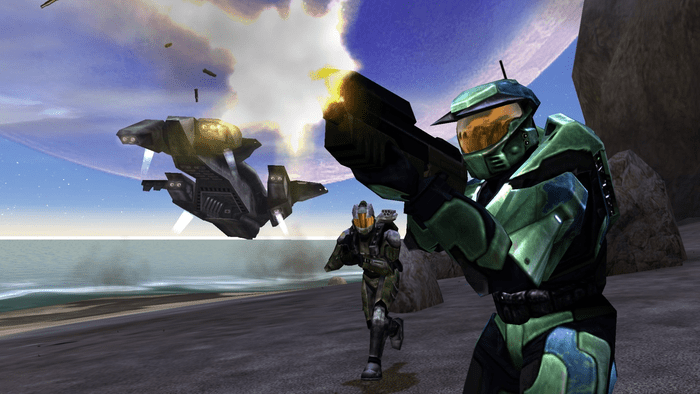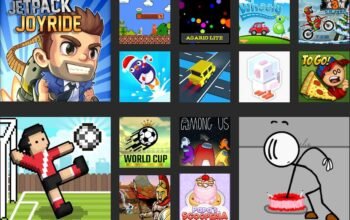Introducing a New Sci-Fi Epic
When Halo: Combat Evolved launched alongside the original Xbox in November 2001, few could have predicted the sweeping impact it would have on the first-person shooter genre and video halo (2003) game icons banners as a whole. As the console’s much-touted launch title, Halo helped drive Xbox sales and build enthusiasm around Microsoft’s debut in the home console market. However, its refined gameplay, imaginative sci-fi setting, and ability to support both single player and online multiplayer ensured Halo gained renown far beyond its platform. Over its initial year-long development period, Halo transformed from a real-time strategy Mac game into the beginnings of the influential franchise it is today.
In the lead up to its release, Microsoft and developer Bungie sought to build buzz around Halo and entice new players to pick up this mysterious title set in an epic sci-fi universe. halo (2003) game icons banners, box art, and other promotional materials provided early glimpses into Halo’s iconic characters, aliens, weapons and worlds. Iconic symbols and imagery were crafted to represent different elements from the Halo experience in a captivating yet enigmatic way. While the graphics capabilities of the original Xbox were limited, Bungie’s artists managed to distill Halo’s mystique into banner designs that stimulated curiosity and foreshadowed the experiences awaiting within.
Establishing Master Chief as the Hero
One of the most recognizable banners from Halo’s early promotional cycle stars the legendary Spartan hero Master Chief front and center. Clad in his distinctive green armor, the Chief takes up a assertive stance with his assault rifle at the ready. Behind him looms the massive construction known as the Ringworld, giving dimension and scale to the Chief’s form. Soft lighting envelops the scene in a serene blue-green glow. Despite the iconic armor obscuring his face, the Chief’s body language conveys a sense of steely determination and focus.
This banner was instrumental in establishing Master Chief as the protagonist and representative figure of the Halo series. Due to his armor cloaking his identity, the Chief became a vessel for players to project themselves into during the gameplay. His imposing yet enigmatic presence hinted at great trials and adversaries awaiting within the Halo installation. By spotlighting the Chief prominently against the Ring, this banner highlighted him as the driving force standing against unknown dangers. It captured the fantastical yet grounded military sci-fi tone Halo worked to achieve. Over subsequent halo (2003) game icons banners, the heroic status of Master Chief grew in tandem with the franchise’s rising popularity.
Alien Encounters through Iconic Symbols
One banner takes a more abstract approach to representing Halo’s adversary factions. Pictured is a glowing Covenant elite in profile with its mandibles flared, silhouetted against a recharging plasma sword. Beneath this ominous image sprawls a logo containing fragmentary symbols that evoke an alien language. The staggered bars and swirling sigils emanate a sense of mystery while providing insight into Halo’s multidimensional alien antagonists.
Rather than depicting the Covenant in realistic detail, this design suggests their mystique and peril through symbolic shapes. The plasma sword hints at deadly force behind elegant alien designs. The fragmented logo invites speculation into meanings that remain unknowable. It teases an intricate backstory and culture players can uncover piece by piece. In crafting enigmatic banners like this, Bungie acknowledged players’ intrinsic desire to decipher hidden depths and peel back layers of revelation. They kindled anticipation for experiencing fantastical alien worlds whose depths were only hinted at through tantalizing icons.
Glorifying the UNSC Arsenal
Weapons play a central role in Halo’s intense firefights, and several banners honor the trusty arsenal of humanity’s Space Forces, the UNSC. One displays the classic assault rifle, Battle Rifle, and favorite rocket launcher stacked side by side in gleaming contours. Shades of blue and grey pay homage to the familiar UNSC palette while accentuating the pure functional forms. Another devotes full focus to the iconic pistol, surrounding it in a circular frame that elevates its status. Through precise lighting and depth of field, both banners bring these tools of war to stunning life yet maintain an air of utilitarian grace.
By spotlighting the dependable guns supporting players in combat, these banners glorified the UNSC military aesthetic. They hinted at the satisfaction of mastering each armaments’ nuanced roles on the battlefield. Through understated heroization of humanity’s weapons, Bungie acknowledged players’ bond with the tools enabling intergalactic resistance. By presenting arms as objects of balanced function and beauty, these banners stoked anticipation for experiencing the visceral dance of gunplay Halo had to offer.
Teasing Story Mysteries
Some banners left story details shrouded in tactical ambiguity. One features a cloaked figure partially obscured by shadow, raising further questions about friend or foe. Glancing over their shoulder with an enigma shrouded in shadow, their intentions remain indecipherable. Text above poses the cryptic query “What if they come back?”. Another teases confrontations with a closeup of an Elite’s eye, conveying haughty menace yet holding deeper puzzles beyond its glare.
Rather than over-explaining plot points, these minimalist designs invite speculation. They acknowledge the thrill of unraveling mysteries through firsthand experience. By hinting at multilayered personalities and unknown factions, Bungie enticed players to engage deeply with Halo’s unfolding story. Cryptic banners like these stoked curiosity without spoiling revelations yet to come. They suggested a rich narrative landscape awaiting discovery through active participation in the halo (2003) game icons banners.
Designing for a New Frontier
When crafting Halo’s early promotional materials, Bungie navigated uncharted territory. As one of Xbox’s debut titles, Halo helped envision what was possible for a new generation of console shooters. The banners, box art, and other media represented early efforts to brand a flagship franchise and bring its sci-fi vision to life within technical limitations.
Despite constraints, Bungie infused imagination and attention to detail that resonated powerfully. They distilled essence over excess, suggesting depths beyond surface levels. Intentional ambiguity and symbolic minimalism invited active participation rather than passive consumption. Text, imagery and empty space were wielded like a storyteller’s tools to intrigue. Bungie acknowledged the player’s intrinsic role in writing their own experiences within virtual worlds.
In the process, they established iconic visual motifs that persist in the Halo identity today. Master Chief, the Covenant, UNSC arms – all were granted mystique and symbolic weight through these early designs. Two decades later, their impact continues shaping players’ memories and expectations of the legendary saga. More than marketing, Halo’s original banners were a collaborative work of visual storytelling that helped launch a universe and cement Xbox’s arrival as a leader in interactive entertainment.
Enduring Legacy
Nearly 20 years since Halo’s debut, references to its iconic early design motifs persist in nostalgia and retrospectives. Fan art pays homage to the original banners’ composition and aesthetic. Documentaries dissecting Xbox and Bungie’s history invariably feature the banners prominently. On anniversary occasions, even Microsoft and 343 Industries themselves reference back to these designs that first cast Halo’s die.
It’s a testament to the care, imagination and lasting resonance within Bungie’s initial efforts to translate Halo’s promise into striking yet enigmatic visual forms. From their inception, the banners grasped an essence of the saga’s spirit that has endured through many hardware generations. More than sales or success, they seem to have touched players on an almost subconscious level, lodging mystique and memory in ways that have resonated over two decades.
In establishing signatures for Master Chief, Covenant, UNSC and more, Halo’s original banners became iconic designs in their own right. Their influence persists in the collective iconography of science fiction and popular culture. More than ad spreads, these were works of participatory art that invited players to take an active role in writing new futures. Two decades later, their capacity to spark wonder and nurture community remains a testament to Bungie’s early vision for an legendary shared universe.
You may also read: squid ward




